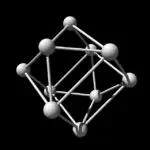Kratom, derived from Mitragyna speciosa leaves, has emerged as a natural option for promoting muscle relaxation within a holistic wellness routine. Its various strains offer different effects due to varying alkaloid content, with red vein kratom strains particularly known for their sedative properties that can help soothe muscles post-exercise or stress relief. To enhance its benefits, combining kratom with activities like stretching, baths, and meditation is recommended. It's crucial to adhere to recommended dosages and consult healthcare professionals, especially for individuals with health concerns or those on other medications. By carefully selecting the right kratom strain and complementing it with a range of relaxation methods, one can personalize their self-care practices to support both muscle relaxation and overall wellness. Additionally, incorporating physical exercises like gentle stretching or yoga, maintaining proper hydration, consuming a diet rich in magnesium and potassium, and using aromatherapy with calming essential oils can further enhance the effects of kratom for optimal muscle relaxation and tranquility.
Embarking on a journey toward wellness often begins with self-care routines tailored to individual needs. This article explores the integration of Kratom as a natural component for muscle relaxation within your daily self-care practices, offering insights into its potential benefits for overall well-being. We will delve into how Kratom can be a valuable addition to your routine, followed by a discussion on complementary self-care activities that amplify the positive effects of Kratom for muscle relaxation. Join us as we navigate the path to a more balanced and relaxed life.
- Crafting Your Daily Self-Care Routine: Integrating Kratom for Muscle Relaxation and Wellness
- Understanding Kratom's Role in Muscle Relaxation and Its Impact on Overall Well-being
- Complementary Self-Care Practices to Enhance the Benefits of Kratom for Muscle Relaxation
Crafting Your Daily Self-Care Routine: Integrating Kratom for Muscle Relaxation and Wellness

Crafting a self-care routine that caters to both physical and mental wellness is essential for maintaining overall health. Kratom, derived from the leaves of Mitragyna speciosa, has been increasingly recognized for its potential benefits in muscle relaxation and holistic wellness. When integrating kratom into your daily self-care regimen, it’s important to approach its use with mindfulness and respect for its effects. Kratom strains vary in their alkaloid profiles and, consequently, their influence on relaxation versus energy can differ significantly. For instance, certain red vein kratom strains are renowned for their sedative properties, which may aid in muscle relaxation after a strenuous activity or a long day. To maximize the benefits of kratom for muscle relaxation, consider pairing it with other self-care practices such as stretching exercises, warm baths, or meditation to enhance its soothing effects. It’s crucial to adhere to recommended dosages and to consult with a healthcare professional before incorporating kratom into your routine, especially if you have underlying health conditions or are taking other medications. By carefully selecting the right kratom strain and complementing it with a range of relaxation techniques, individuals can craft a personalized self-care routine that promotes both muscle relaxation and overall wellness.
Understanding Kratom's Role in Muscle Relaxation and Its Impact on Overall Well-being

Incorporating Kratom into self-care routines, particularly for muscle relaxation, has garnered attention due to its potential benefits. Kratom, a plant originating from Southeast Asia, contains alkaloids that can interact with the body’s opioid receptors, leading to a range of effects including pain relief and relaxation. When it comes to muscle relaxation, Kratom is believed to help alleviate tension and discomfort, allowing individuals to unwind and reduce stress. This can be particularly beneficial for those experiencing chronic pain or muscle stiffness, as it may offer an alternative to traditional pharmaceuticals with potentially fewer side effects. The use of Kratom for muscle relaxation should be approached with caution, as dosage and strain significantly influence its effects. Users often report a sense of calmness and well-being following Kratom consumption, which can contribute positively to overall mental health and emotional balance. It’s important for individuals to consult with healthcare professionals before incorporating Kratom into their self-care practices to ensure safety and appropriate use, considering the nuances of its interaction with the body’s systems. Additionally, a consistent self-care routine that includes Kratom for muscle relaxation can be part of a holistic approach to wellness, promoting better physical health and potentially enhancing quality of life by addressing pain and stress.
Complementary Self-Care Practices to Enhance the Benefits of Kratom for Muscle Relaxation

Integrating complementary self-care practices with the use of Kratom can significantly amplify its effects for muscle relaxation. For instance, incorporating gentle stretching or yoga into one’s daily routine alongside Kratom consumption can enhance flexibility and reduce tension. These activities promote blood flow to the muscles, aiding in the alleviation of stiffness and pain. Additionally, practices like progressive muscle relaxation, where individuals focus on tensing and then relaxing different muscle groups, can be particularly effective when used in conjunction with Kratom’s soothing properties. This synergy not only heightens the effects of muscle relaxation but also fosters a deeper sense of calm and well-being, contributing to an overall improved state of mind.
Furthermore, ensuring proper hydration and nutrition complements the use of Kratom for muscle relaxation. Hydrating the body helps maintain muscle elasticity and supports the metabolism of Kratom. Consuming a balanced diet rich in magnesium, potassium, and other essential minerals can also enhance the effects of Kratom by promoting optimal muscle function and recovery. Engaging in activities like aromatherapy with calming essential oils, such as lavender or chamomile, can further complement these practices, creating a holistic approach to relaxation that targets both the physical and mental aspects of well-being. By combining Kratom with these thoughtful self-care strategies, individuals may find greater success in achieving profound muscle relaxation and an improved sense of tranquility.
Incorporating kratom into a self-care routine can be a powerful approach to achieving muscle relaxation and promoting overall wellness. This article has explored the multifaceted benefits of kratom, delving into its role in easing muscle tension and its positive impact on mental and emotional health. By complementing kratom with other self-care practices, individuals can enhance these effects, leading to a more balanced and tranquil state. As you craft your personal daily routine, consider how kratom, alongside mindful exercises like meditation, yoga, or simply setting aside time for reflection, can contribute to your holistic health. Remember that consistency is key; regular self-care practices can help maintain the benefits of muscle relaxation afforded by kratom, ensuring a harmonious balance in your daily life.






